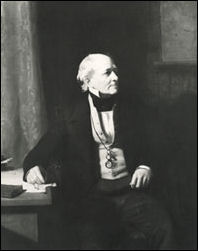Sir Frances Beaufort
Francis Beaufort was born in 1774 in County Meath to the Rector of Navan the Reverend Daniel Augustus Beaufort. At the age of 13yrs he began his career at sea by joining the British Navy as a cabin boy. Three years later he recognised the value of being weather wise and started to keep weather comments in his journals this he did until his death in 1857. In 1805 Beaufort was given his first command HMS Woolwich and ordered to carry out a hydrographic survey of the Rio de la Plata area of South America. It was during these years he developed his Wind Force Scale and Weather Notation coding, which he used in his journals.

In 1811 Beaufort
captained HMS Fredrikssteen on a hydrographic and patrol cruise to the Eastern
Mediterranean. It was here in 1812 that a shore party engaged in astronomical
observations had to be rescued, Beaufort lead the rescue party and on the
way back to the ship was hit in the groin by a musket ball. This effectively
ended his seafaring career but he remained in the navy until he was 81yrs
old. 1829 saw Beaufort appointed "Hydrographer to the Admiralty".
From this position, he planned hydrographic studies for numerous Navy expeditions
including the famous H.M.S. Beagle, commanded by Robert Fitzroy. In 1838 Beaufort's
Wind Force Scale was introduced by the British Navy for all log entries, adding
to Beaufort's Weather Notation, which was introduced in 1833.
Beaufort was promoted to Rear Admiral in 1846 by the Admiralty. Bestowed the
title Knight Commander of the Bath in 1848. Only in 1855 after 68 years before
the flag, Sir Francis Beaufort retired from the Admiralty. He died in 1857,
yet his work of a life times achievements continued to receive the honours
and recognition they deserve up to the present day.